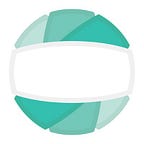Are you looking to design or create art in virtual reality? The demand for 3D artists and designers is increasing quickly. Large animation studios, art houses and VR/AR vendors are ramping up. If you are a designer with expertise in 2D design, how do you transfer your skills into this growing opportunity? How is designing in virtual reality different from flat-screen 2D?
The Envrmnt 3D Content Team includes artists and designers that have been on the front line of this movement. Working for Envrmnt, they’ve created characters and virtual worlds that have appeared in Envrmnt VR creations such as Spooky Drive in Theater (feature image above) and Mission Neon. Hear their thoughts in the below interview.
Q. What’s the difference between designing for a flat screen medium vs augmented or virtual reality?
Christina: When artists first come to Envrmnt, they are told to think of art like a sphere, not a flat piece of paper. That’s a major mind shift.
Pete: VR adds another dimension to design, you are no longer projecting to a 2D flat screen, like a video game. You are creating for stereoscopic vision, where you see an object as solid in three spatial dimensions — width, height and depth — or x, y and z. It is the added perception of the depth dimension that makes stereoscopic vision so rich and special, but also challenging.
Q: How does that impact storytelling?
Jeff — Before joining Envrmnt, I worked in film. We usually had main action and then we had development of the back story. But with VR you have to build out these back stories, it’s no longer just a back story anymore, it could be front and center depending on what the viewer does. VR subtlety is not your friend, because everything is going on at once …. which makes VR more complex and expensive.
Christina: In traditional film, the director controls what viewers see. He or she focuses the camera and light to develop the narrative and story flow. But with VR, you don’t have narrative control. Viewers can choose a character to follow or a door to go through or image to look at. They have the freedom to choose their adventure.
Pete: As you progress from 2D to VR, every dimension you add on to art, the margin of error decreases. 2D art is a flat illustration, so you can play around quite a bit and it still looks good. But when you add interactivity, it becomes way more complex, and when you add dimensions of binocular vision or stereoscopic vision, none of the texture tricks will work.
For example, in a traditional movie, a tree is so far away, you can make it low poly resolution because you won’t see it close up, because the director and camera won’t focus there. But in VR you have flexibility to move around, so all objects have to be to be fully developed.
Are there ways to control the narrative in VR?
Christina: Yes. You can take the light off parts of a scene, or present a closed door, but have it locked, or have a character tell the viewer to go in a certain direction (whether friendly or not, is another story), or give clues. So storytelling is possible in VR, it’s just more difficult, you have to purposely guide them.
Q: What are some techniques you use?
Olivia: As Pete said, in VR the margin of error decreases because viewers are no longer constrained; they can actually walk up close to artwork and the angle-of-view changes. So, techniques that we used with 3D art have to be used in VR with greater caution.
For example, when we do texture work on models, we use a technique called “normal mapping,” which essentially “fakes” the surface of the model so it appears from a distance to contain more depth details. A lot of games and realtime-based experiences use this technique because it can keep geometry data simple and lightweight. The figure below shows a brick wall using normal mapping. Because the artist dictates the angle of view, viewers see the wall at the same angle and the artist can get away with making the wall as a plain box and using a normal map to fake the depth.
In VR or AR, however, viewers or participants can get close to the wall and view it from different angles. The viewer then sees that there’s no depth to the wall, and that it’s merely texture. This can break the VR immersion experience, especially if the project uses a hyper-realistic aesthetic.
So instead the artist needs to spend extra time modeling the brick wall so that all parts are multidimensional. Another more simpler option is to simply block the viewer from walking too close to the wall. But this might also break the illusion of immersion. So the artist needs to be selective. It doesn’t mean we can’t use normal mapping at all, but as an artist we need to be much more aware of the user experience and create assets according to the experience.
So what’s next if you want to pursue being a designer in AR or VR? Jeff Smith believes a great approach is to actually experience what it’s like being in an immersive space. According to Jeff: “Rather than read books or articles, I would recommend trying the experience. It was when I first experienced VR programs such as Tiltbrush, and the short film “The Rose and I,” that I became aware of the power of the medium.”
